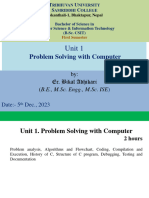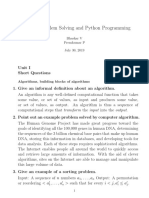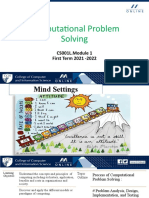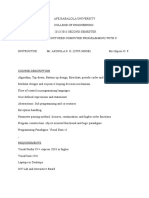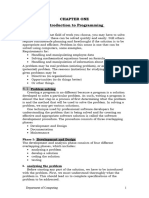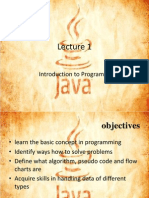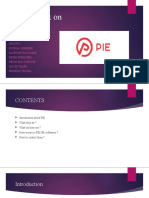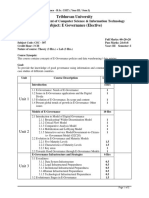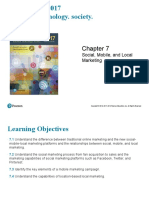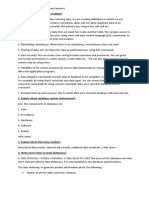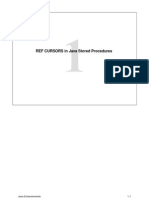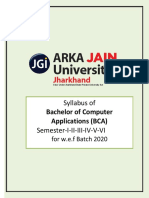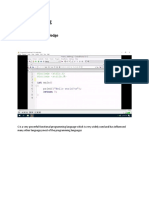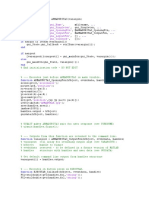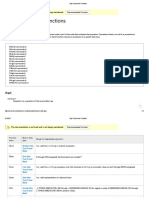0% found this document useful (0 votes)
45 views60 pagesUnit 1: Problem Solving With Computer (2 HRS.)
This document provides an overview of problem solving using computers. It discusses the steps involved, including problem analysis, algorithm development using flowcharts, coding the program, compiling and executing it, debugging, and documentation. It introduces the C programming language and provides examples of algorithms and flowcharts for problems like calculating the sum and maximum of two numbers and finding the sum of the first 5 natural numbers. The document is presented by Tekendra Nath Yogi and outlines the unit on problem solving with computers.
Uploaded by
tekendra nathCopyright
© © All Rights Reserved
We take content rights seriously. If you suspect this is your content, claim it here.
Available Formats
Download as PDF, TXT or read online on Scribd
0% found this document useful (0 votes)
45 views60 pagesUnit 1: Problem Solving With Computer (2 HRS.)
This document provides an overview of problem solving using computers. It discusses the steps involved, including problem analysis, algorithm development using flowcharts, coding the program, compiling and executing it, debugging, and documentation. It introduces the C programming language and provides examples of algorithms and flowcharts for problems like calculating the sum and maximum of two numbers and finding the sum of the first 5 natural numbers. The document is presented by Tekendra Nath Yogi and outlines the unit on problem solving with computers.
Uploaded by
tekendra nathCopyright
© © All Rights Reserved
We take content rights seriously. If you suspect this is your content, claim it here.
Available Formats
Download as PDF, TXT or read online on Scribd
/ 60

